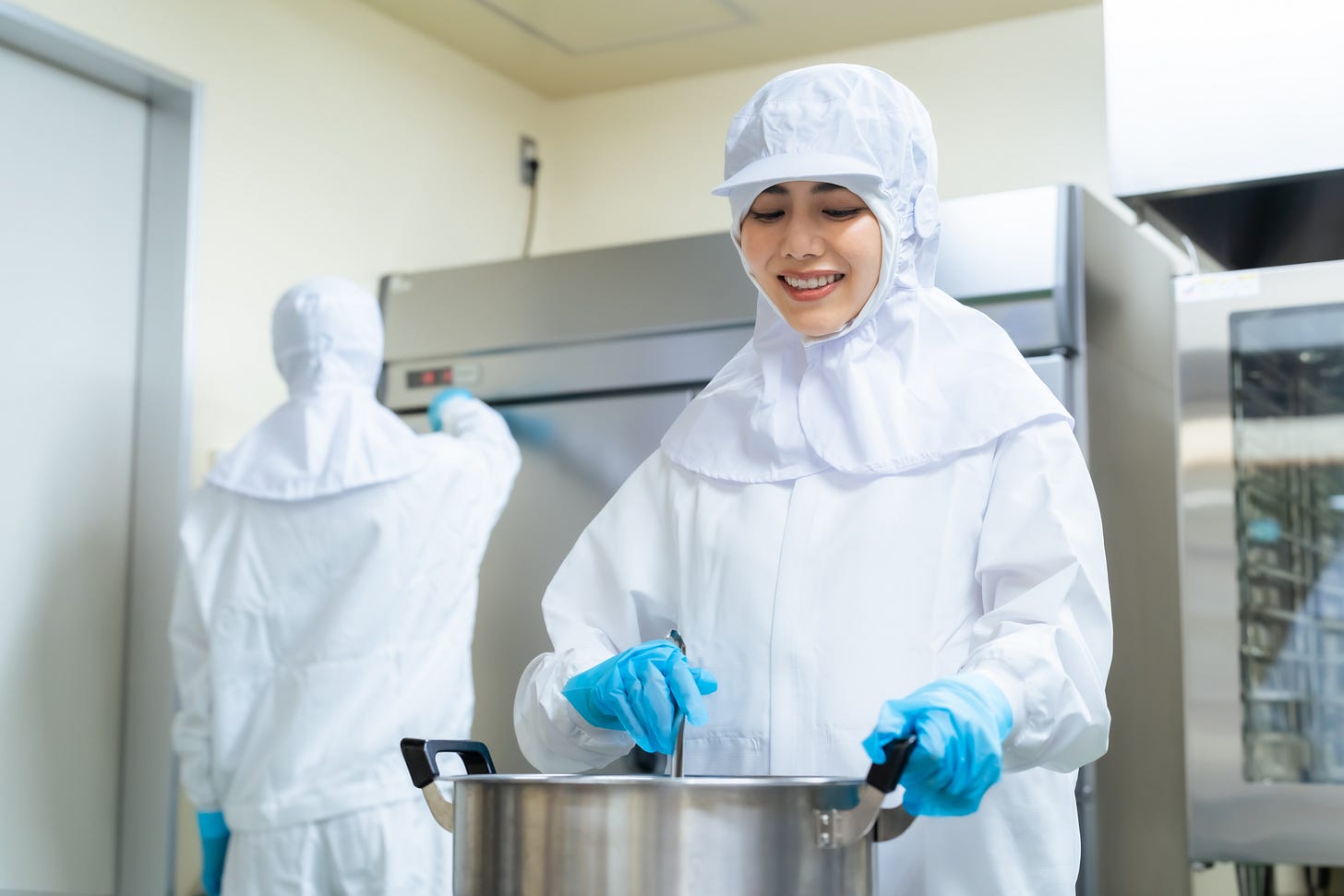Ten Crazy Things I've Learned About Foodborne Illness
Surprising facts that have changed how I handle food — and germs — at home.
I haven’t been writing as frequently for The New York Times over the past few months because I’ve been buried in book writing, but my current beat there can best be described as “things that give you diarrhea.” I’ve written for them about norovirus, listeria, salmonella, and, just this morning, E. coli. That last one completely took over my brain yesterday — I essentially reported, wrote, and went through edits for the piece in a day — which is why my newsletter is a little late today.
Because I’ve been writing so much about these nasty bugs, I thought I’d do a round-up today of the craziest things I have learned about foodborne illness from my reporting. I have long been a germaphobe1, and I thought I already knew everything I needed to know, but apparently, I was wrong.
Here are ten surprising things I have learned about foodborne illnesses that have furrowed my brow — and have changed what I do to keep my family safe.
People often talk about getting “food poisoning” as if they got sick because they ingested spoiled food, but by far the most common cause of foodborne illness is norovirus — and it’s highly contagious. (People often get it from consuming uncooked foods, like salads, prepared by someone who had norovirus on their hands.) Noroviruses sicken a whopping 19 to 21 million Americans per year. By comparison, each year, salmonella bacteria sicken an estimated 1.35 million people nationwide, E. coli sicken an estimated 265,000, and listeria causes only about 1,600 illnesses.
People often assume that it was the last thing they ate that made them sick, but often, it’s not. Yes, norovirus can develop quickly (12-48 hours) but other foodborne illness symptoms can take a lot longer — up to six days for salmonella, 10 days for E. coli, and three months for listeria (!!!).
A person has to ingest between 10,000 and one million salmonella bacteria to get sick from them — but all one needs to ingest are as few as 100 E. coli2 or just 20 noroviruses to fall ill from those nasty jerks.
Don’t wash your poultry. It does not decrease the risk that you’ll get sick. It actually increases your risk, because the washing contaminates your sink and other surfaces.
Organic meat and poultry can still harbor salmonella or disease-causing E. coli, although some research does suggest the risk with organic is lower.
Don’t wash your eggs. If your eggs are cold and your water is warm, or vice versa, you can actually pull bacteria into the egg through the shell.
To kill norovirus (i.e. cleaning up after someone who was sick), stick with bleach-based cleaners. And wash your hands thoroughly because hand sanitizers do not work. To make a bleach solution, mix between a half cup and cup of bleach with a gallon of water — or use health-care-grade bleach wipes, such as Clorox Healthcare Bleach Germicidal Wipes. Let the bleach sit on the surface for at least five minutes, ideally ten, because it takes time to kill these resilient jerks. Hydrogen peroxide cleaners are another effective option. (If you really want to prevent the spread of norovirus in your home after someone falls ill — it’s very hard to do! — buckle up and read this piece I wrote. Yes, I bought kitty litter for this exact reason.)
Antibiotics can actually make E. coli infections worse, increasing the risk for severe complications. It’s also a bad idea to take anti-diarrheal medication like Imodium if you are sick with E. coli. (How do you know if you’re sick with E. coli compared with something else? Often with E. coli people have blood in their diarrhea and really bad stomach cramps. But the only way to know for sure is to get a diagnostic test, which your doctor might order depending on your symptoms.)
Now (finally) for some good news: Most people who are exposed to listeria don’t get sick, because their immune systems are able to fight the bacteria off. Listeria typically sicken people who are 65 and older, who are pregnant or who have weakened immune systems. (Put another way, if you hear news of a listeria outbreak, you may not need to panic unless you are in one of those groups. Though of course it’s best to avoid ingesting potentially contaminated food just in case!)
Most bacteria don’t grow well at low temperatures, but listeria are an exception. Always keep your fridge below 40 degrees, because even a degree or two above that and listeria can grow. (But again, less of a concern none of your family members are in a high risk group.)
I had a particularly nasty and protracted salmonella infection when I was a toddler, which turned my mom into a germaphobe, which turned me into a germaphobe. My daughter seems to be following suit.
I’m referring specifically to shiga toxin-producing E. coli, which are the ones that typically make humans sick. There are many types of E. coli that are harmless.
How To Support Kids At The Doctor
Today, I’m providing science-based strategies for parents who want to help kids overcome fear and manage pain during potentially painful procedures.
What To Do If You Find A Tick
Here I discuss how to remove a tick, what to do with it, how and why to identify it, whether you should consider tick testing, what tick-borne disease symptoms to look out for, and what you should know about Lyme testing.






Norovirus is absolutely awful, and I don’t think enough people really understand just how contagious it is. There was a restaurant study about how many people in an entire restaurant got sick after one person vomited once… it was something like the nearest 10 tables.
The visual sign for norovirus does provide some comic relief, though!
Norovirus sucks so much. We had it last year, then 2 weeks after symptoms stopped we visited my sister - and gave it to her and her whole family. Even my dad, who only visited outside, got it.